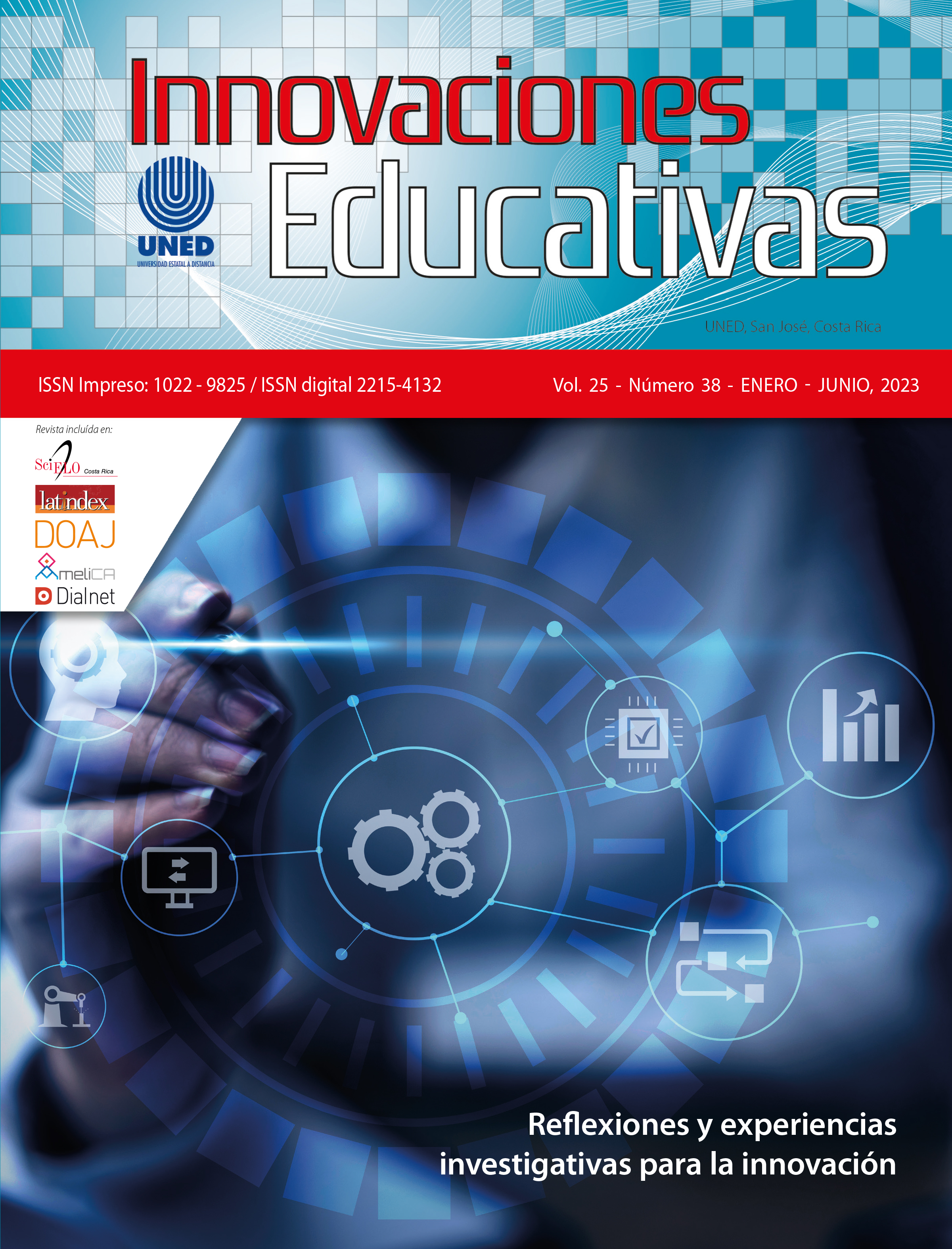Literacy and statistical thinking in the information society: a reflection appertaining to the teaching practice
DOI:
https://doi.org/10.22458/ie.v25i38.4229Keywords:
teaching, didactic strategy, statistical literacy, statistical thinking, educationAbstract
This systematization aims to bring to light the teaching experience using actual data in problem-solving for the students to develop skills related to literacy and statistical thinking. One aspect to consider for the design of this didactic strategy was the COVID-19 pandemic context because all courses were to be taught 100% in a virtual modality. The didactic experience begins with the application of an online questionnaire addressed to the students of introductory Statistics courses. These courses are part of the many study programs offered at Universidad de Costa Rica. From the data collected online and data published by the Ministry of Health related to the COVID virus, various learning guides were generated focused on the basic concepts of descriptive statistics. Among the main results is the importance of technological mediation to achieve literacy and statistical thinking, focusing on aspects related to data quality, its summarization, and interpretation. Additionally, the students managed to go beyond statistical calculation since they established substantive conclusions related to their discipline.
References
ASA (2016). GAISE College Report ASA Revision Committee, Guidelines for Assessment and Instruction in Statistics Education College Report 2016. http://www.amstat.org/education/gaise
Ausubel, D. P. (1976). Psicología educativa: Un punto de vista cognoscitivo. Editorial Trillas.
Batanero, C. (2002). Los retos de la cultura Estadística. Jornadas Interamericanas de Enseñanza de Estadística. Buenos Aires. https://www.ugr.es/~batanero/pages/ARTICULOS/CULTURA.pdf
Chaves, E. (2015). La enseñanza de la Estadística y la Probabilidad, más allá de procedimientos y técnicas. Conferencia paralela dictada en la XIV CIAEM. Chiapas.
Díaz-Barriga, F. y Hernández, G. (2001). Estrategias docentes para un aprendizaje significativo: una interpretación constructivista. McGrawHill.
Franklin, C.; Horton, N.; Kader, G.; Moreno, J.; Murphy, M.; Snider, V. y Starnes, D. (2005). GAISE report: a pre-k–12 curriculum Framework.
Gal, I. (2002). Adults’ Statistical Literacy: Meanings, Components, Responsibilities. International Statistical Review, 70(1), 1-25. https://doi.org/10.1111/j.1751-5823.2002.tb00336.x
Gómez, M. (2014). Estadística Descriptiva. EUNED.
Kikut, L. (2021). Análisis de resultados de la evaluación de la virtualización de cursos en la UCR ante la pandemia por COVID-19: Perspectiva estudiantil. Repositorio Kérwá. http://www.kerwa.ucr.ac.cr/handle/10669/81216
Linnebo, O. (2018). Platonism in the Philosophy of Mathematics. The Stanford Encyclopedia of Philosophy Archive. https://plato.stanford.edu/archives/spr2018/entries/platonism-mathematics
Lind, D.; Marchal, W. y Wathen, S. (2016). Estadística aplicada a los negocios y a la economía. McGraw-Hill.
Moore, D. S. (1998). Statistics among the liberal arts. Journal of the American Statistical Association, 93(444), 1253-1259.
Rumsey, D. (2002). Statistical Literacy as a Goal for introductory Statistics Courses. Journal of Statistics Education, 10(3). jse.amstat.org/v10n3/rumsey2.html
Utts, J. (2014). Educación estadística y sociedad: Desafíos para la formación inicial de profesores. Seminario organizado por la Universidad Católica de Chile.
Wallman, K. K. (1993). Enhancing statistical literacy: Enriching our society. Journal of the American Statistical Association, 88(421), 1-8.
Wild, C. y Pfannkuch, M. (1999). Statistical thinking in empirical enquiry (con discusión). International Statistical Review, 67(3), 223-265
Downloads
Published
How to Cite
Issue
Section
License
Copyright (c) 2023 Innovaciones Educativas

This work is licensed under a Creative Commons Attribution-NonCommercial-NoDerivatives 4.0 International License.

